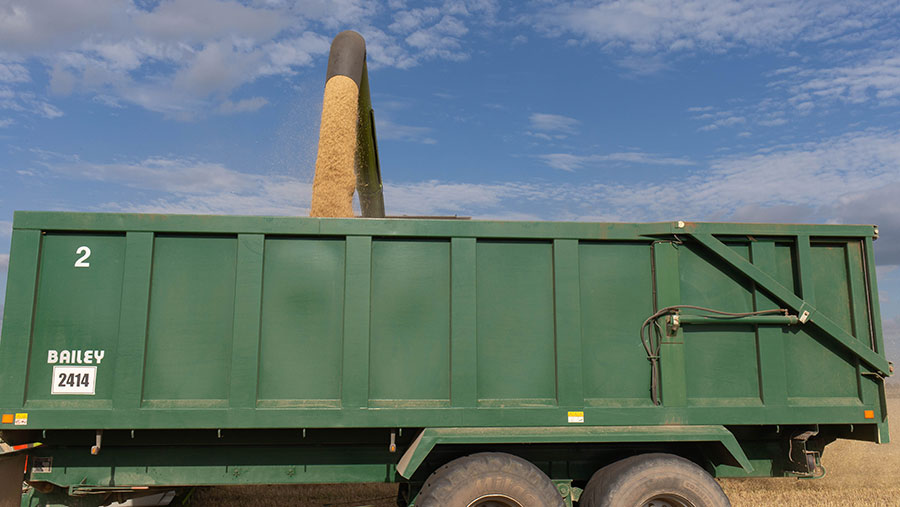Huge surge in UK grain exports confirmed
 © Tim Scrivener
© Tim Scrivener Grain exports from the 2019 harvest far outstripped the pace of the previous year, fresh data from HMRC has confirmed.
More than 1.14m tonnes of wheat left the UK between July 2019 and June 2020, with monthly exports peaking at more than 265,000t in September.
With June data still to come, the figure is already more than three times the amount shipped in 2018-19, according to the AHDB.
See also: Harvest 2020: Oilseed rape yields prove disappointing
Barley exports were higher still, with 1.73m tonnes exported, compared with just 860,000t in 2018-19.
Monthly shipment volumes for both crops peaked in autumn 2019 amid fears that tariffs were set to be imposed if the UK left the EU without a transition period.
Exports are set to be much lower this season, with agronomy and grain-trading firm Frontier predicting the wheat crop is expected to be sized at 9-10m tonnes, compared with the 16.2m tonnes produced in 2019.
It said earlier this month that wheat imports of up to 3m tonnes may be required to meet demand.
As combines began to roll this week, domestic prices have continued to be influenced by factors much further afield.
After briefly coming close to £170/t last week, futures prices for November 2020 slipped back to trade at about £167/t (22 July) as the yield outlook for spring wheat crops in the US improved.
Some 68% of the crop remained in good and excellent condition, with the excellent category increasing by 2 percentage points week on week.
Meanwhile, new-crop farmgate prices for August delivery were flat on the week at a UK average price of £159/t (22 July).
Prices were trading in a range of £152-£167/t, according to the Farmers Weekly survey of merchants, with Shropshire the highest-paying region and Kent the lowest.
Oilseed rape
Prospects for new-crop rapeseed were brighter, with prices for August delivery up £5/t on the week to stand at a UK average of £329/t.
Analysts at grain trading advice firm CRM Agricommodities noted that crude oil markets had gained in value in recent days, after positive news from pharmaceutical firms about a potential coronavirus vaccine.
There have also been increases in soya and vegetable oil markets following increased demand from China and a warning from palm oil producers that they are likely to fall well short of production targets due to labour shortages.
